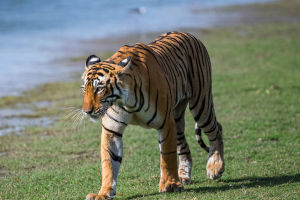Falconry, a practice with ancient roots, has been a part of human culture for thousands of years. It involves using trained birds of prey, like falcons and hawks, to hunt other animals.
Although it may sound ancient and obscure, falconry is still very much alive today in various parts of the world. For those new to this fascinating practice, let’s take a closer look at what falconry is, its origins, techniques, and where it is practiced globally.
What is Falconry?
At its core, falconry is the art of hunting with trained birds of prey. These birds are trained to catch prey, ranging from small mammals to birds. It’s a partnership between the falconer (the person who trains the birds) and the bird, who shares in the hunt. In falconry, falcons, hawks, and even eagles are often used depending on the region and type of prey. While different species may be used, falconry itself focuses on utilizing the bird's natural hunting instincts, honed through careful training.
Origins of Falconry
The origins of falconry trace back to around 2000 BCE, with evidence suggesting it started in Mesopotamia. Falcons were especially significant in ancient Mongolian cultures, symbolizing power and prestige. As the practice spread to other regions, it was refined and adapted by different cultures. Notably, the Arabs played a key role in developing falconry techniques, which were later shared with Europe during the medieval period. In the 13th century, Emperor Frederick II of the Holy Roman Empire wrote a comprehensive book on the subject, which became a key source of knowledge for falconers.
The Art of Falconry: Training and Techniques
Falconry is not just about hunting; it’s a skill that requires years of practice. Falconers must build a strong bond with their birds, and training begins from a young age. Birds are trained to respond to commands and to work alongside their handler. Hunting with a bird of prey is a precise and calculated activity. The bird must be able to track and catch prey at incredible speeds, which makes this practice not only exciting but also a testament to the bond between human and bird.
Training methods vary depending on the species of bird, but the general goal is the same: to create a harmonious relationship that allows the bird to act as an extension of the falconer’s will. This includes teaching the bird to come back after a hunt, to fly to specific areas, and to avoid distractions. It’s an art form that requires patience, dedication, and respect for the bird.
Global Distribution and Popularity
Though falconry is often associated with the Middle East, it is practiced around the world. The United Arab Emirates (UAE) is particularly famous for its falconry culture, and it has been recognized by UNESCO as part of the world’s intangible cultural heritage. Other countries like the United Kingdom, Mongolia, and the United States also have rich traditions in falconry. In fact, falconry is practiced on every continent, except Antarctica. It is particularly popular in countries with vast open landscapes where birds of prey can hunt freely.
Countries like Kazakhstan, Morocco, and have also kept the tradition alive, making it a truly global practice. These regions host falconry festivals and competitions, where falconers showcase their birds and hunting skills. The practice continues to draw people from different walks of life, eager to connect with nature through this ancient and noble tradition.
The Future of Falconry
While falconry’s roots go back centuries, its future is bright. Modern technology, such as GPS tracking and better veterinary care, has enhanced the way falconers train and care for their birds. In many countries, falconry clubs and organizations promote the practice and educate new generations of falconers. These groups help protect the birds of prey used in falconry and ensure that hunting practices are sustainable.
With increasing interest in nature and traditional practices, falconry is seeing a resurgence in popularity. The practice’s inclusion in global cultural heritage listings, such as UNESCO, has helped preserve its techniques and spread awareness about its significance. Falconers today still preserve the old traditions while incorporating new knowledge, ensuring that this ancient art continues for generations to come.
Final Thoughts
Falconry is more than just a method of hunting; it is a connection between humans and nature, built on trust and mutual respect. Whether practiced as a hobby, a sport, or a cultural tradition, falconry offers a unique glimpse into an ancient world where humans and birds work together to survive. For those lucky enough to experience it, falconry is a breathtaking reminder of the power and beauty of nature.
To all the Lykkers out there, if you're looking for a new hobby that combines history, skill, and adventure, why not try your hand at falconry? The world of birds of prey is waiting to be explored, and it might just change your perspective on nature forever.


